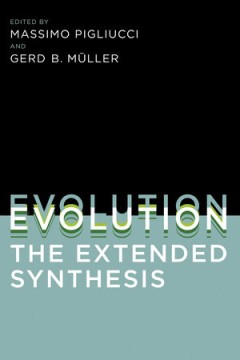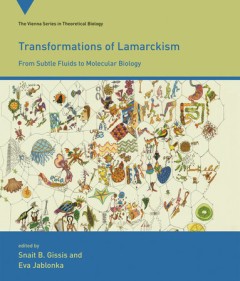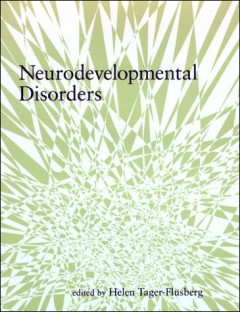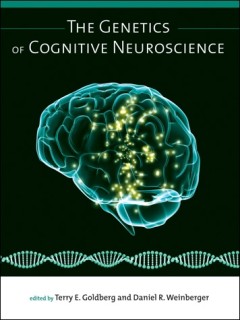Filter by

The genealogy of a gene :patents, HIV/AIDS, and race
In The Genealogy of a Gene, Myles Jackson uses the story of the CCR5 gene to investigate the interrelationships among science, technology, and society. Mapping the varied "genealogy" of CCR5 -- intellectual property, natural selection, Big and Small Pharma, human diversity studies, personalized medicine, ancestry studies, and race and genomics -- Jackson links a myriad of diverse topics. The hi…
- Edition
- -
- ISBN/ISSN
- 9780262327190
- Collation
- 1 online resource (xii, 336 pages) :illustrations, map.
- Series Title
- -
- Call Number
- -

Evolution, the Extended Synthesis
Outgrowth of a meeting of the "Altenberg 16" at the Konrad Lorenz Institute for Evolution and Cognition Research in Altenberg, Austria, in July 2008. Cf. pref.In this volume, 16 leading evolutionary biologists and philosophers of science survey the conceptual changes that have emerged since Huxley's landmark publication, not only in such traditional domains of evolutionary biology as quantitati…
- Edition
- -
- ISBN/ISSN
- 9780262315142
- Collation
- 1 online resource (viii, 495 pages) :illustrations
- Series Title
- -
- Call Number
- -

Transformations of Lamarckism: From Subtle Fluids to Molecular Biology
This title shows the advantages of a Lamarckian perspective on evolution. Indeed the development-oriented approach it presents is becoming central to current evolutionary studies.OCLC-licensed vendor bibliographic record.
- Edition
- -
- ISBN/ISSN
- 9780262295642
- Collation
- 1 online resource (xvi, 457 pages) :illustrations.
- Series Title
- -
- Call Number
- -

Fables and futures :biotechnology, disability, and the stories we tell ourselves
How new biomedical technologies--from prenatal testing to gene-editing techniques--require us to imagine who counts as human and what it means to belong. From next-generation prenatal tests, to virtual children, to the genome-editing tool CRISPR-Cas9, new biotechnologies grant us unprecedented power to predict and shape future people.OCLC-licensed vendor bibliographic record.
- Edition
- -
- ISBN/ISSN
- 9780262351799
- Collation
- 1 online resource (240 pages).
- Series Title
- -
- Call Number
- -

Neurodevelopmental disorders
"Until recently, genetic, neuroanatomical, and psychological investigations on neurodevelopmental disorders were carried out independently. Now, tremendous advances across all disciplines have brought us toward a new scientific frontier: the integration of molecular genetics with a developmental cognitive neuroscience. The goal is to understand the basic mechanisms by which genes and environmen…
- Edition
- -
- ISBN/ISSN
- 9780262284653
- Collation
- 1 online resource (xii, 614 pages) :illustrations.
- Series Title
- -
- Call Number
- -

Neurogenetic developmental disorders :variation of manifestation in childhood
A reference to guide clinicians, researchers, teachers, and parents in identifying a range of genetic disorders despite widely variable cognitive, behavioral, and physical effects.OCLC-licensed vendor bibliographic record.
- Edition
- -
- ISBN/ISSN
- 9780262279321
- Collation
- 1 online resource (xiv, 507 pages) :illustrations.
- Series Title
- -
- Call Number
- -

The genetics of cognitive neuroscience / of Cognitive Neuroscience
A primer on understanding the influence of specific genetic variants on cognition, affective regulation, personality, and central nervous system disorders.
- Edition
- -
- ISBN/ISSN
- -
- Collation
- 1 online resource (xii, 297 pages) : illustrations.
- Series Title
- -
- Call Number
- -

Reframing Rights: Bioconstitutionalism in the Genetic Age
Legal texts have been with us since the dawn of human history. Beginning in 1953, life too became textual. The discovery of the structure of DNA made it possible to represent the basic matter of life with permutations and combinations of four letters of the alphabet, A, T, C, and G. Since then, the biological and legal conceptions of life have been in constant, mutually constitutive interplay -…
- Edition
- -
- ISBN/ISSN
- 9780262298667
- Collation
- 1 online resource (x, 310 pages).
- Series Title
- -
- Call Number
- -

The Major Transitions in Evolution Revisited
In 1995, John Maynard Smith and E?ors Szathm?ary published their influential book 'The Major Transitions in Evolution'. In this volume, scholars reconsider and extend the earlier book's themes in light of recent developments in evolutionary biology.OCLC-licensed vendor bibliographic record.
- Edition
- -
- ISBN/ISSN
- 9780262295703
- Collation
- 1 online resource (x, 319 pages) :illustrations.
- Series Title
- -
- Call Number
- -

Inequality :a genetic history
"New genomic studies on ancient remains are unveiling different forms of inequality that were prevalent in the past and have shaped the genomes of humankind"--OCLC-licensed vendor bibliographic record.
- Edition
- -
- ISBN/ISSN
- 0262369176
- Collation
- 1 online resource.
- Series Title
- -
- Call Number
- -
 Computer Science, Information & General Works
Computer Science, Information & General Works  Philosophy & Psychology
Philosophy & Psychology  Religion
Religion  Social Sciences
Social Sciences  Language
Language  Pure Science
Pure Science  Applied Sciences
Applied Sciences  Art & Recreation
Art & Recreation  Literature
Literature  History & Geography
History & Geography